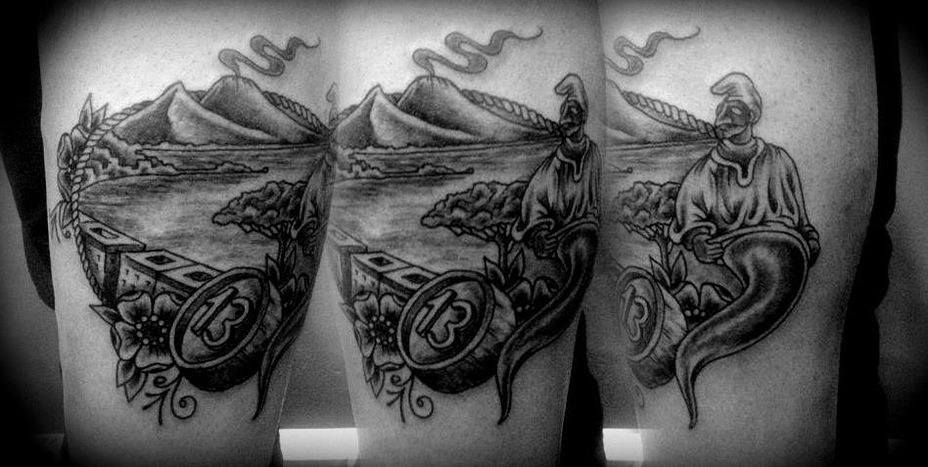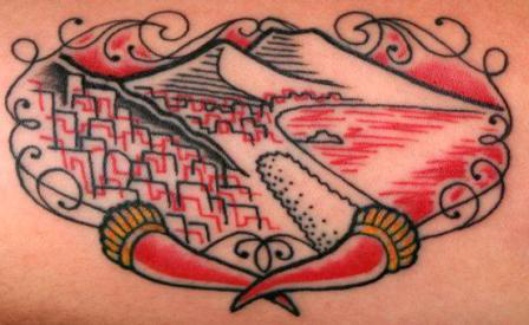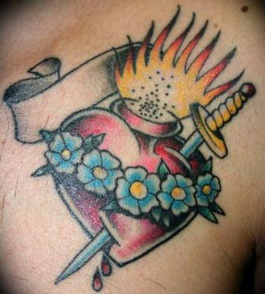
Naples: the city of sacred tattoos
Published on
Translation by:
Lucy O'SullivanFrom London to Naples, Madrid to Berlin: tattoos have become the new form of self-expression for young Europeans. Yet few know the true meaning of the designs they have sketched on their bodies. Cafébabel set out to uncover this hidden history on the streets of Naples.
Once a statement of rebellion and marginality, today the tattoo has become, to the detriment of those who appreciate its true meaning, simply another mass phenomenon, another exhibitionistic fad whose oblivious followers reflect the contradictory nature of our times.
Research carried out in 2010 in the United Kingdom reflected the expansion of the tattoo industry in Europe, indicating a dramatic rise in the number of people with tattoos over the last ten years. It was revealed that within the British population alone, one fifth of citizens had a tattoo, 29% of whom were aged between 16 and 44 years old. This went hand in hand with a considerable increase in the number of tattoo parlours which rose from 300 in 1990 to over 1500 today.
THE SECRET CODE
However, on the other side of the continent in Naples this popular craze remains bound to the past. Here tattoos still recall the sights and sounds of a distant era when they represented a kind of secret code, a silent language among sailors, prostitutes, prisoners and members of the Camorra whose meaning was not dictated by trends or the changing tides of fashion.
Until now scholarly consensus has dismissed tattoo art as a secondary characteristic of successive criminal groups throughout history. Yet this interpretation fails to take into consideration the ancient mysticism behind these symbols which speak of shattered dreams, love and hate, broken vows, lust and the thirst for vengeance. It overlooks the obscure and ancient origins from which tattoo art developed. So what then is the intrinsic meaning of these symbols which have emerged from the realm of ‘marginality’ to become part of the age of uniformity? How is it that what once stood for a lifelong oath has today become merely another addition to the endless line of designer labels to be flaunted?
Lello Scarienzo, a professional tattoo artist at the Tattoo Point parlor in Naples, checks the machine and arranges his inks and needles meticulously, preparing the altar for the unholy mass of blood and ink that he is about to perform. A memento of pain. He slips on a pair of gloves and taps the pedal with his foot. The walls of his parlour are completely papered over with sketches, drawings and photographs depicting the ace of clubs, handguns, knives, immortal skulls, rosaries, redemptive Christs and Madonnas with flaming hearts: garish icons that represent the very flesh and blood of the people living in the shadow of Vesuvius.
' The ace of clubs was the tattoo used by Mafia underbosses to show that they were thugs, who were good with their hands,' Lello explains without looking up. 'The gun on the other hand,’ he continues, 'was tattooed on the more bloodthirsty gangsters'. It singled out someone who had stolen lives weighing on their conscience. However, like the knife it had another meaning; it stood for an imminent vendetta, a kind of personal oath. As it is widely accepted in Naples that the holy and the sacrilegious go hand in hand it is hardly surprising that symbols such as guns, knives and knuckledusters should be intertwined with votive rosaries and other religious imagery.
The ace of clubs was the tattoo used by Mafia underbosses to show that they were thugs, who were good with their hands,' Lello explains without looking up. 'The gun on the other hand,’ he continues, 'was tattooed on the more bloodthirsty gangsters'. It singled out someone who had stolen lives weighing on their conscience. However, like the knife it had another meaning; it stood for an imminent vendetta, a kind of personal oath. As it is widely accepted in Naples that the holy and the sacrilegious go hand in hand it is hardly surprising that symbols such as guns, knives and knuckledusters should be intertwined with votive rosaries and other religious imagery.
 'The rosary is a symbol of protection, a kind of guardian that would help you get away with crimes and other sinful acts. The flaming heart adorned with a crown of thorns represents the Sacred Heart of Jesus; while that encircled by a crown of flowers and pierced by a sword represents the heart of the Virgin Mary.' An awareness of mortality pervades all of these images. 'The symbol of the skull is simply a way of mocking death, a means of warding it off without forgetting that life and death are inherently bound together, that one is simply a prelude to the other. In this sense it's a symbol that mocks death but that also expresses a certain respect for it, an attitude which is typical of Neapolitans,' explains Lello.
'The rosary is a symbol of protection, a kind of guardian that would help you get away with crimes and other sinful acts. The flaming heart adorned with a crown of thorns represents the Sacred Heart of Jesus; while that encircled by a crown of flowers and pierced by a sword represents the heart of the Virgin Mary.' An awareness of mortality pervades all of these images. 'The symbol of the skull is simply a way of mocking death, a means of warding it off without forgetting that life and death are inherently bound together, that one is simply a prelude to the other. In this sense it's a symbol that mocks death but that also expresses a certain respect for it, an attitude which is typical of Neapolitans,' explains Lello.
Naples is all this and more: a place halfway between the sweetest dreams and the most terrible nightmares, between dim narrow alleys and wide sun-kissed streets. It is here in a sacrilegious ceremony uniting past and present that new life is breathed into these religious and nautical emblems. Each day this mysterious art-form is revived both by those who still speak its secret language and those oblivious to its meaning.
Translated from Napoli, dove il tatuaggio è sacro



